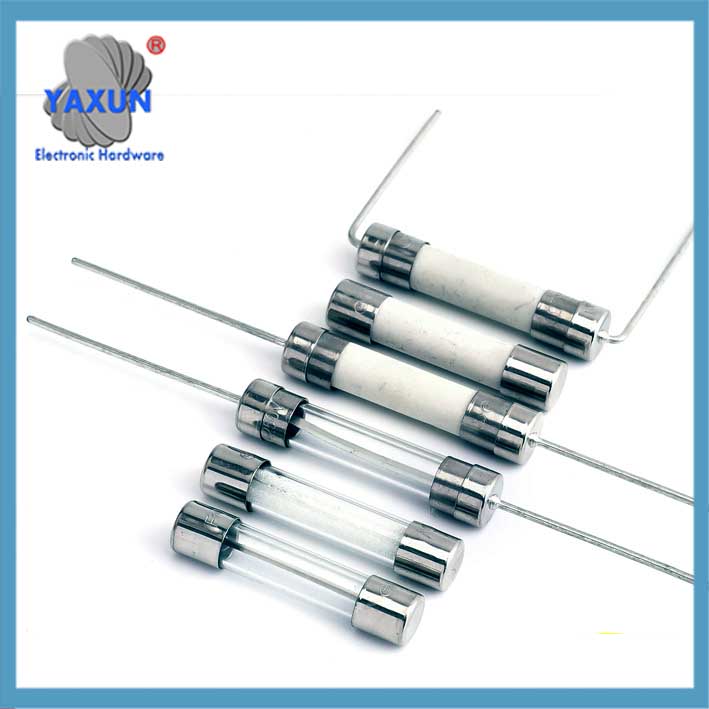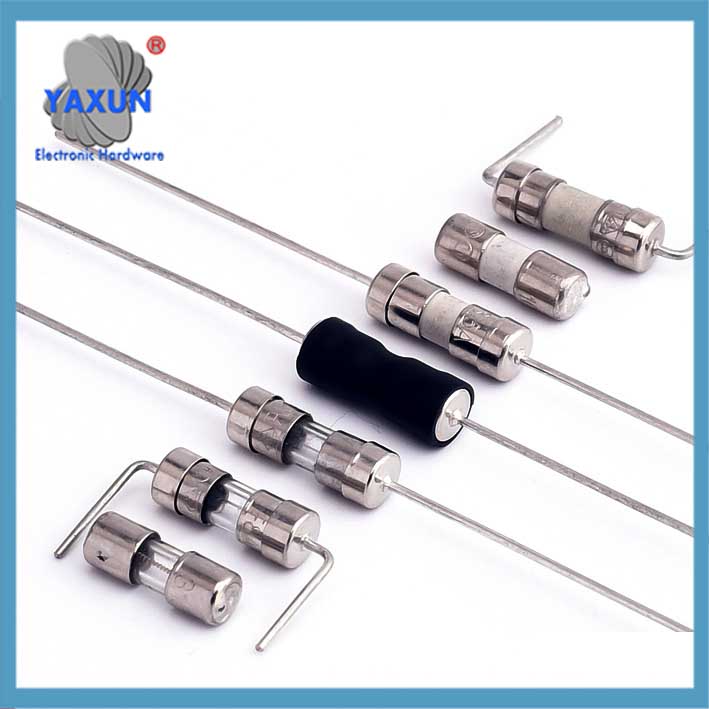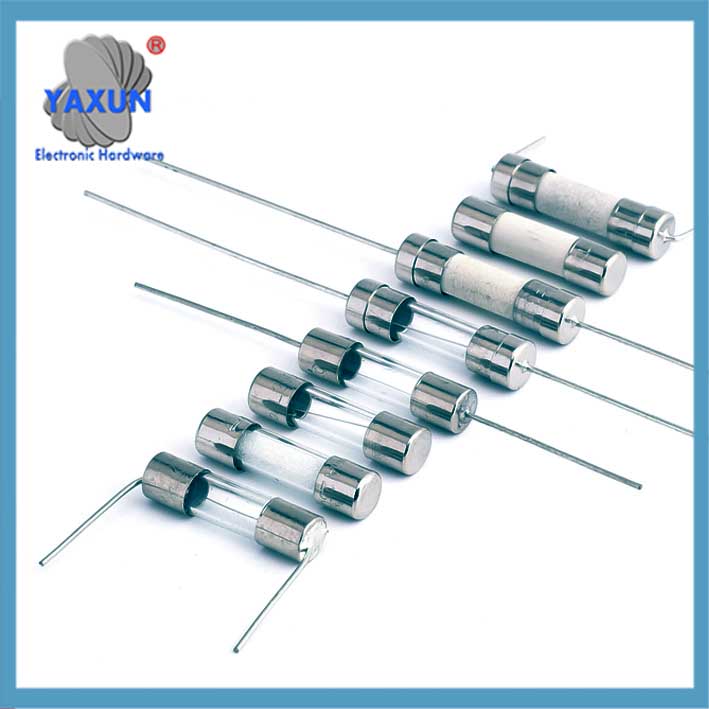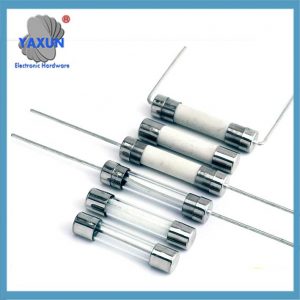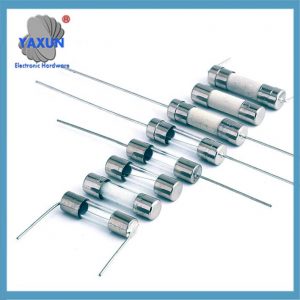Kategorije izdelkov
- toplotna varovalka 32
- površinsko nameščene varovalke 12
- termistor 36
- Nosilec varovalk za PCB 27
- Kabelski snop 6
- Držala rezilnih varovalk 17
- termostat 50
- Električna varovalka 24
- Senzor avtomobilske temperature 7
- Termični odklopnik 22
- Nosilec škatle z varovalkami 36
- Temperaturni senzor 75
- Termično stikalo 68
- Avtomobilska varovalka 20
- Pritrjene varovalke 8
Oznake izdelkov
Zaščita pred pretokom | 5×20 6×30 mm Kartušne varovalke
Električna varovalka za zaščito pred prevelikim tokom je varnostna naprava, ki prekine pretok električne energije v tokokrogu, ko tok preseže vnaprej določeno raven. Deluje kot žrtveni člen, taljenje in prekinitev tokokroga, da preprečite poškodbe napeljave in drugih komponent zaradi pregretja ali potencialnih požarov zaradi previsokega toka.
Električna varovalka za zaščito pred prevelikim tokom je zaščitna naprava tokokroga, ki prek mehanizma varovalke prekine nenormalni tok. Njegova glavna funkcija je varovalka, ko tok preseže nazivno vrednost, da zaščiti zadnjo opremo. Sledi podrobna razlaga razvrstitve in značilnosti:
Tradicionalna varovalka
Delovni načelo:
Ko tok preseže mejo, kovinska talina se zaradi Joulovega toplotnega učinka stali in prekine vezje, ki je enkratna zaščitna naprava. Običajni odzivni čas je v milisekundah, in zaščita pred kratkim stikom zahteva hitro taljenje (kot je čas taljenja varovalke iz steklene cevi ≤40 ms) . Taljiva povezava:
Varovalka vsebuje majhno, prevodna žica ali trak (talilni člen) zasnovan tako, da se stopi ali upari, ko tok, ki teče skozenj, preseže njegovo nazivno zmogljivost.
Zaščita pred pretokom:
To taljenje odpre vezje, prekine pretok električne energije in prepreči nadaljnjo škodo.
Za enkratno uporabo:
Varovalke so zasnovane za enkratno uporabo in jih je treba zamenjati, ko prekinejo tokokrog.
Zanesljivost: Varovalke so znane po svoji zanesljivosti pri prekinjanju prevelikega toka.
Stroškovna učinkovitost: Na splošno so poceni v primerjavi z drugimi napravami za zaščito pred prevelikim tokom.
Preprostost: Dizajn je preprost, omogoča enostavno razumevanje in uporabo.
Raznolikost: Varovalke so različnih velikosti, oblike, in trenutne ocene, ki ustrezajo različnim aplikacijam.
Vrste: Varovalke so razvrščene v različne razrede (npr., L, RK1, RK5, T, J, CC, itd.) za obravnavo posebnih scenarijev nadtoka in zahtev glede delovanja.
Vrste in strukture Vrsta vtičnika: pogosto uporablja v avtomobilskih tokokrogih, tok 1-120A, razdeljen na štiri specifikacije od ultra majhnih do velikih.
Tip SMD: Embalaža SMD, primeren za PCB visoke gostote, ki vsebuje medij za gašenje obloka iz kremenčevega peska.
Vrsta steklene cevi: prozorna lupina je priročna za opazovanje stanja varovalke, tok 0,5-80A.
Ključni parametri Nazivni tok/napetost: na primer 250 V/10 A s počasnim izklopom, ga je treba znižati glede na 75% (UL standard) oz 90% (standard IEC) dejanskega toka.
Značilnosti taljenja: hitrega tipa (proti kratkemu stiku) in počasnega tipa (proti prenapetosti).
Kdaj se uporabljajo varovalke?
Podružnična vezja:
Varovalke se običajno uporabljajo v gospodinjskih in komercialnih električnih sistemih za zaščito posameznih tokokrogov.
Zaščita opreme:
Uporabljajo se lahko za zaščito določenih komponent v napravi, kot so transformatorji ali vezja.
Časovni zamik in hitro delovanje:
Varovalke so lahko zasnovane za aplikacije s časovnim zamikom (npr., za induktivna bremena z velikimi zagonskimi tokovi) ali hitro delujočih aplikacij (npr., za uporovne obremenitve).
Samoponastavljiva varovalka (Pptc) Mehanizem delovanja
Izdelan iz visoko molekularnega polimera in prevodnih delcev, smola se razširi zaradi toplote, ko pride do prevelikega toka, blokira pot, in se ohladi, da obnovi nizek upor po odpravi napake1011. Odzivna hitrost je obratno sorazmerna z jakostjo toka (kot npr 0805 paket zaščite druge stopnje).
V primerjavi s tradicionalnimi varovalkami
| Značilnosti | Pptc | Tradicionalna varovalka |
|---|---|---|
| Odpornost | Samodejna ponastavitev | Zahteva ročno zamenjavo |
| Notranji upor | Nizka odpornost (začenši z 0,008Ω) | Nižje (miliohmski nivo) |
| Veljavni scenariji | Vmesnik za vročo zamenjavo, zaščita baterije | Visoka zanesljivost vhodne moči |
Primeri nadtokovnih scenarijev:
Kratki stiki:
Ko prideta dva ali več prevodnikov v neposreden stik, ustvarjanje poti nizkega upora za tok, pride do kratkega stika.
Preobremenitve:
Ko je tokokrog dlje časa izpostavljen toku, ki je višji od njegove zmogljivosti, velja za preobremenitev.
Napake na tleh:
Ko električna energija teče od žice pod napetostjo do zemlje (zemlja), imenuje se zemeljska napaka.
Obločne napake:
To so nevarne električne razelektritve, ki se lahko pojavijo v napeljavah ali električnih komponentah.
Omejitve:
Zamenjava: Varovalke je treba zamenjati, ko pregorijo, kar je lahko neprijetno.
Ni ga mogoče ponastaviti: Za razliko od odklopnikov, varovalk ni mogoče ponastaviti in ponovno uporabiti.
Morda ni tako natančen: Varovalke morda ne nudijo enake stopnje natančnosti pri prekinjanju tokov kot nekateri odklopniki.
Za zaključek, varovalke so pomemben del električne varnosti, zagotavljanje zanesljivega in stroškovno učinkovitega načina za zaščito tokokrogov in opreme pred nevarnostmi prevelikega toka.
Kontaktirajte nas
Čakam na vašo e-pošto, vam bomo odgovorili v roku 12 ure z dragocenimi informacijami, ki jih potrebujete.
 English
English Afrikaans
Afrikaans العربية
العربية বাংলা
বাংলা bosanski jezik
bosanski jezik Български
Български Català
Català 粤语
粤语 中文(简体)
中文(简体) 中文(漢字)
中文(漢字) Hrvatski
Hrvatski Čeština
Čeština Nederlands
Nederlands Eesti keel
Eesti keel Suomi
Suomi Français
Français Deutsch
Deutsch Ελληνικά
Ελληνικά हिन्दी; हिंदी
हिन्दी; हिंदी Magyar
Magyar Bahasa Indonesia
Bahasa Indonesia Italiano
Italiano 日本語
日本語 한국어
한국어 Latviešu valoda
Latviešu valoda Lietuvių kalba
Lietuvių kalba македонски јазик
македонски јазик Bahasa Melayu
Bahasa Melayu Norsk
Norsk پارسی
پارسی Polski
Polski Português
Português Română
Română Русский
Русский Cрпски језик
Cрпски језик Slovenčina
Slovenčina Slovenščina
Slovenščina Español
Español Svenska
Svenska ภาษาไทย
ภาษาไทย Türkçe
Türkçe Українська
Українська اردو
اردو Tiếng Việt
Tiếng Việt
